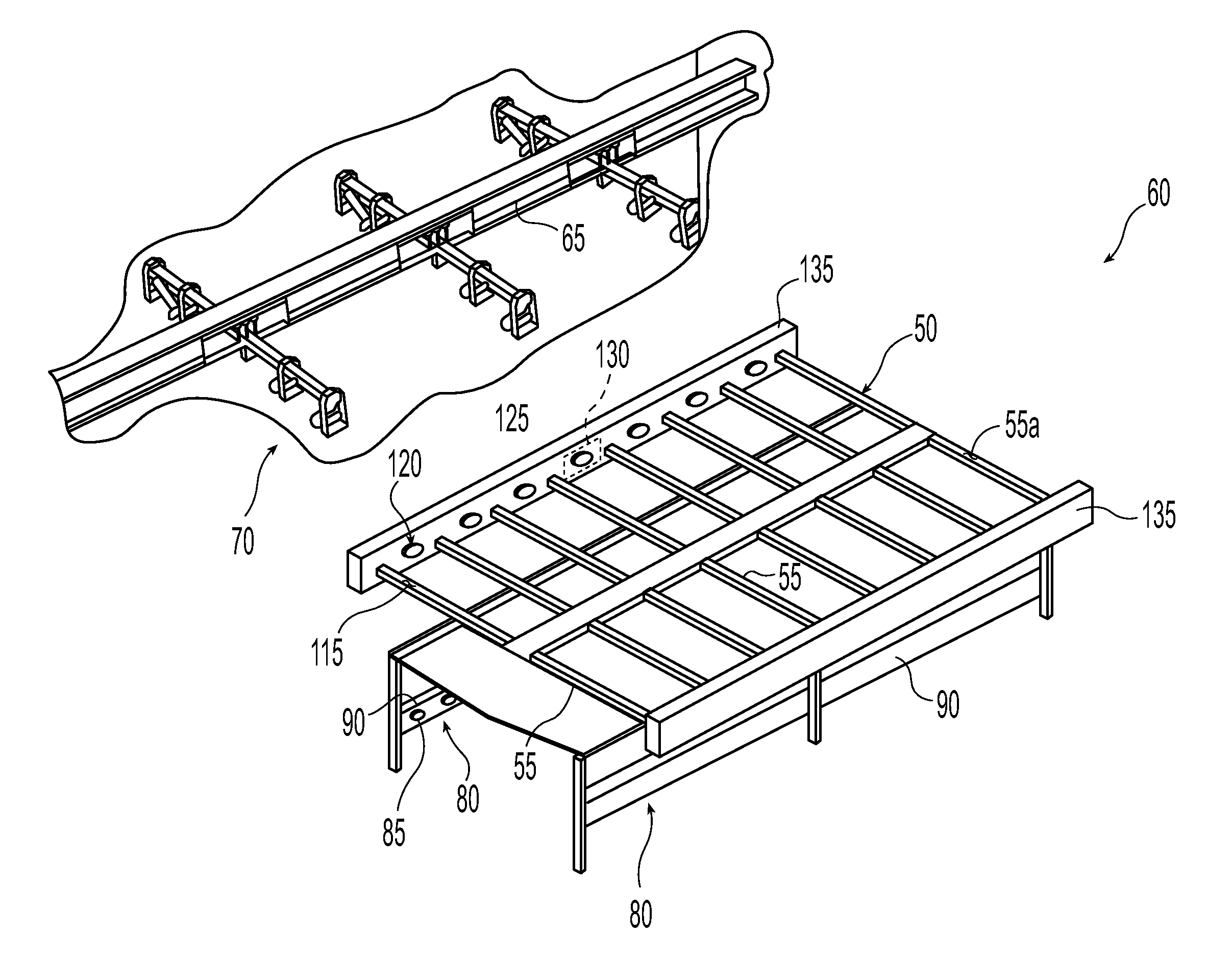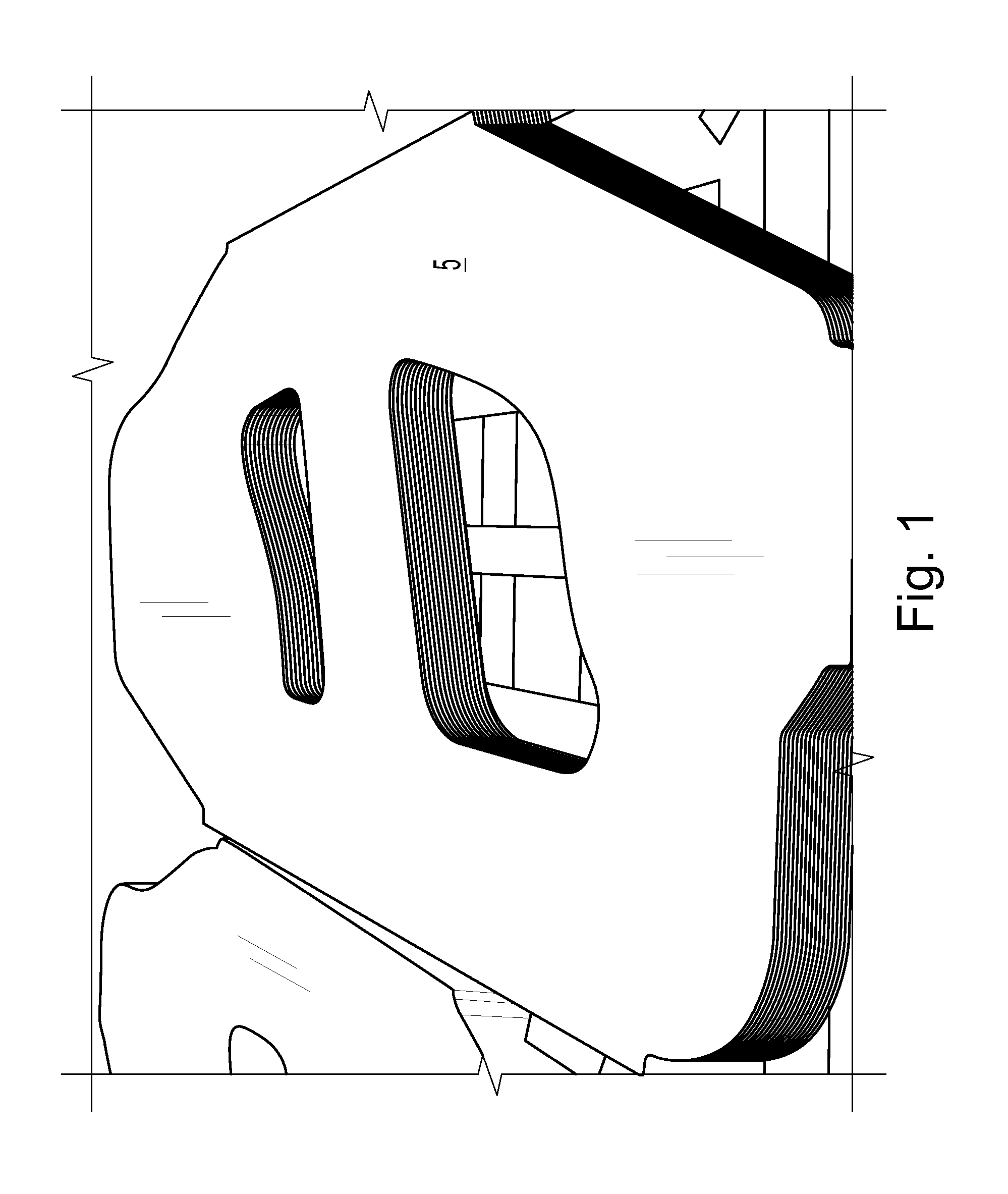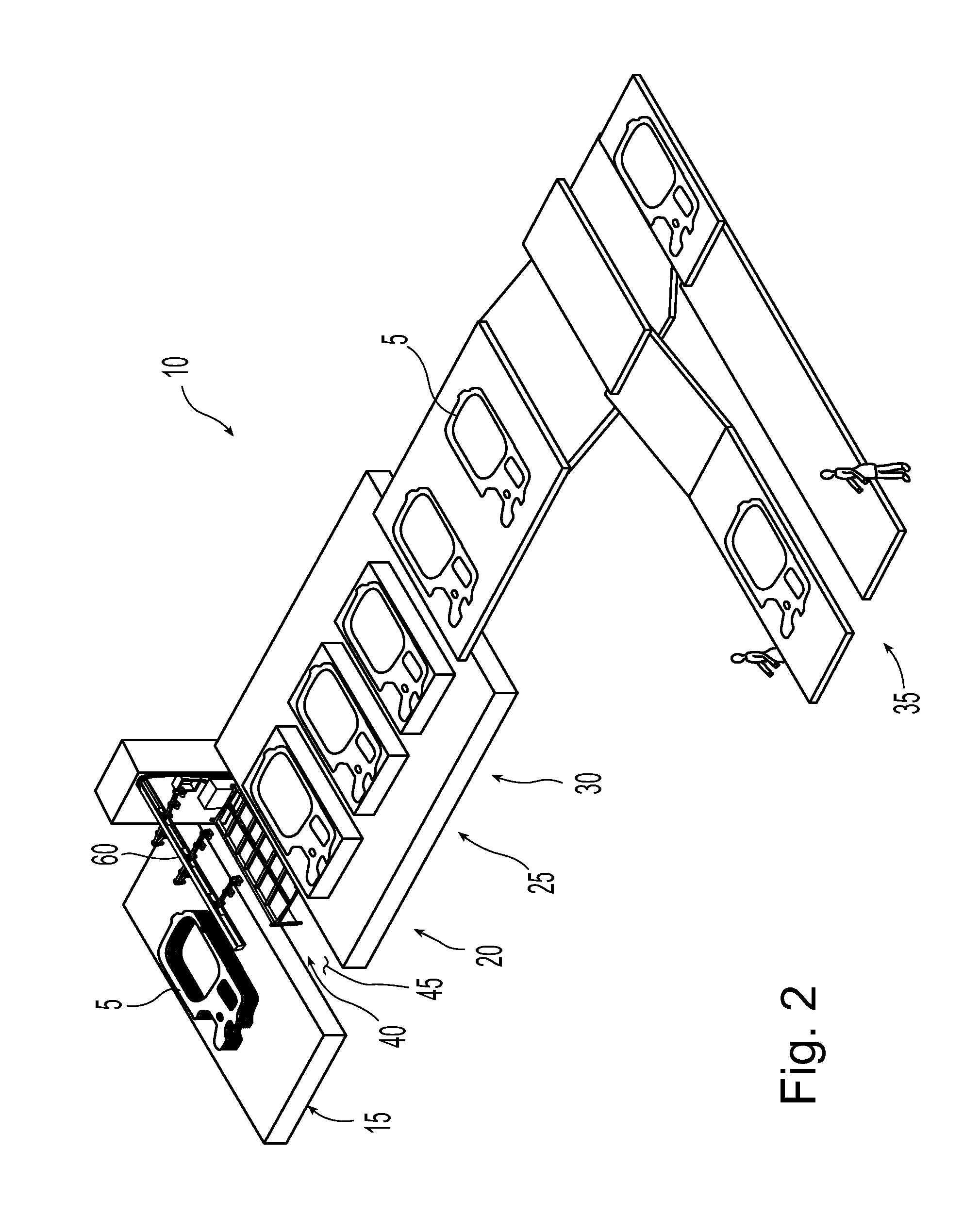Stamping in-line crack detection system and method
a detection system and stamping technology, applied in the field of stamping in-line crack detection system and method, can solve problems such as cracks, common problems, and components that eventually fail during use, and contribute to cracks
- Summary
- Abstract
- Description
- Claims
- Application Information
AI Technical Summary
Benefits of technology
Problems solved by technology
Method used
Image
Examples
Embodiment Construction
)
[0025]As mentioned above, for purposes of simplicity, a single illustrative and exemplary embodiment of the present invention is discussed in detail below. However, it is to be understood that the present invention is in no way limited by the illustrative embodiment.
[0026]As can be observed in FIG. 1, this exemplary embodiment of the present invention is designed to inspect a vehicle body panel 5—in this particular case, a vehicle side panel. As shown in FIG. 1, the body panel 5 may still be in blank (unformed) condition as would generally be received from a blanking station. Alternatively, the blank may have already been partially formed by the first draw press 15.
[0027]The exemplary embodiment of the present invention is installed to a to a transfer press line 10. The transfer press line 10 employs a number of in-line presses 15, 20, 25, 30 to perform various portions of the overall panel forming process. For example, as can be best observed in FIG. 2, this particular press line ...
PUM
 Login to View More
Login to View More Abstract
Description
Claims
Application Information
 Login to View More
Login to View More - R&D
- Intellectual Property
- Life Sciences
- Materials
- Tech Scout
- Unparalleled Data Quality
- Higher Quality Content
- 60% Fewer Hallucinations
Browse by: Latest US Patents, China's latest patents, Technical Efficacy Thesaurus, Application Domain, Technology Topic, Popular Technical Reports.
© 2025 PatSnap. All rights reserved.Legal|Privacy policy|Modern Slavery Act Transparency Statement|Sitemap|About US| Contact US: help@patsnap.com



